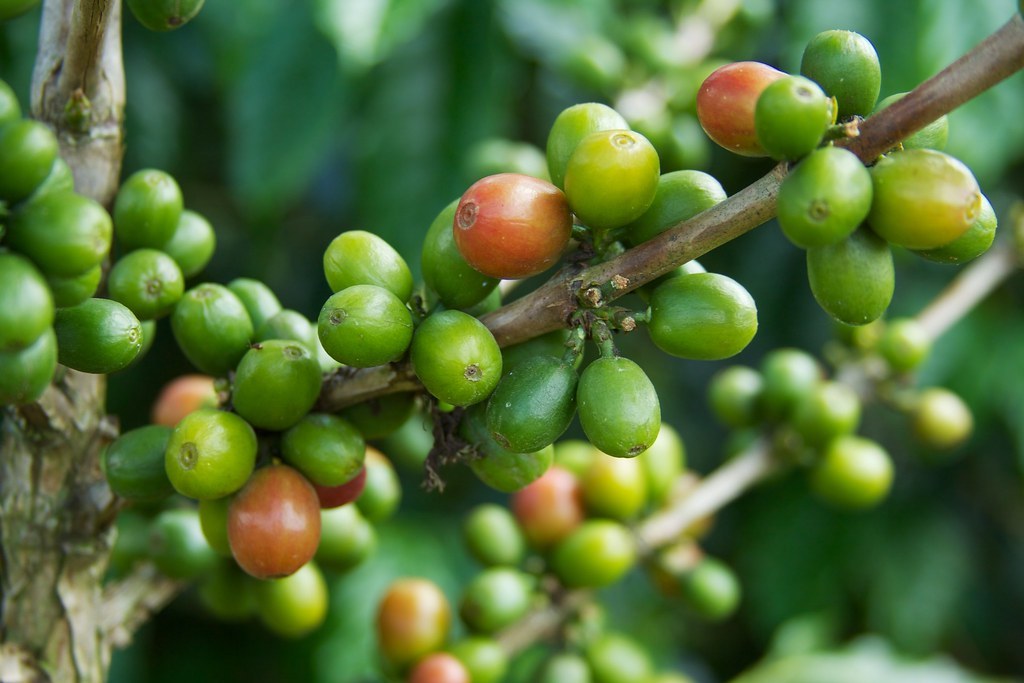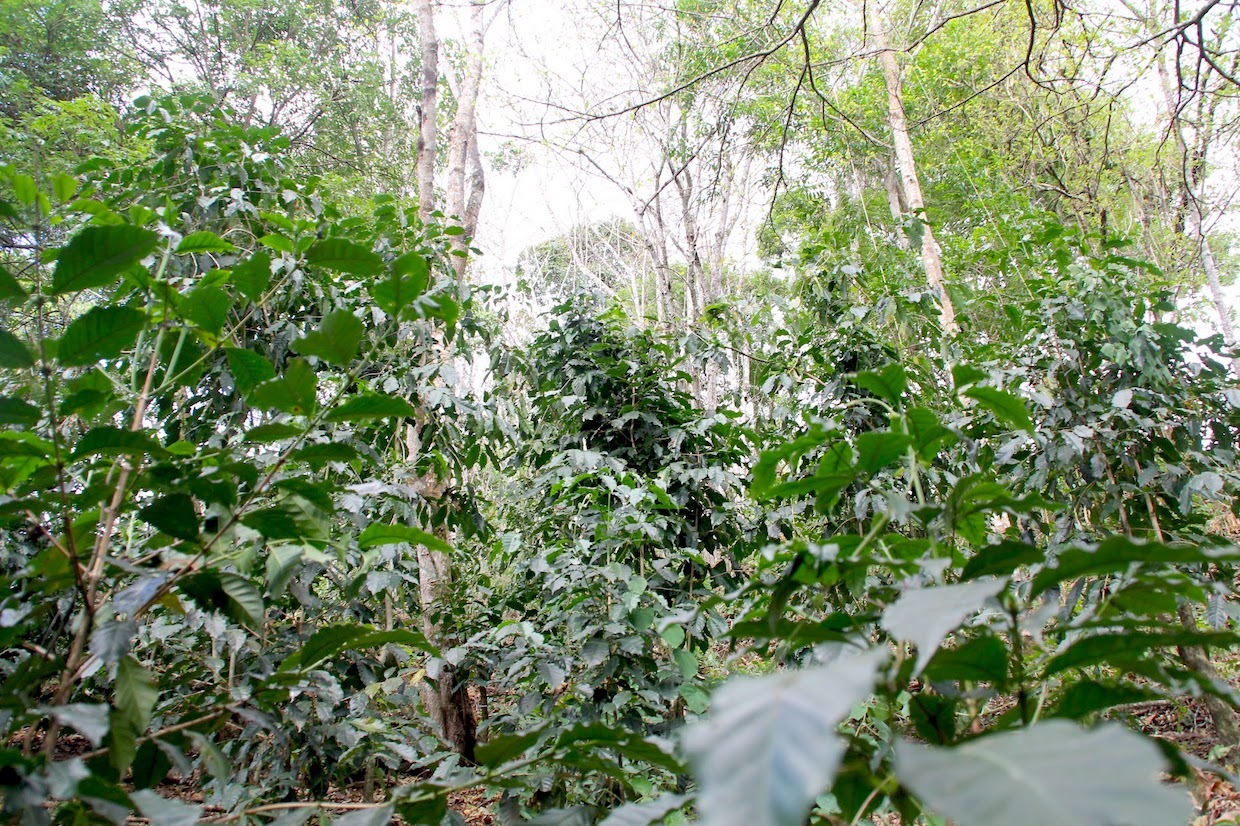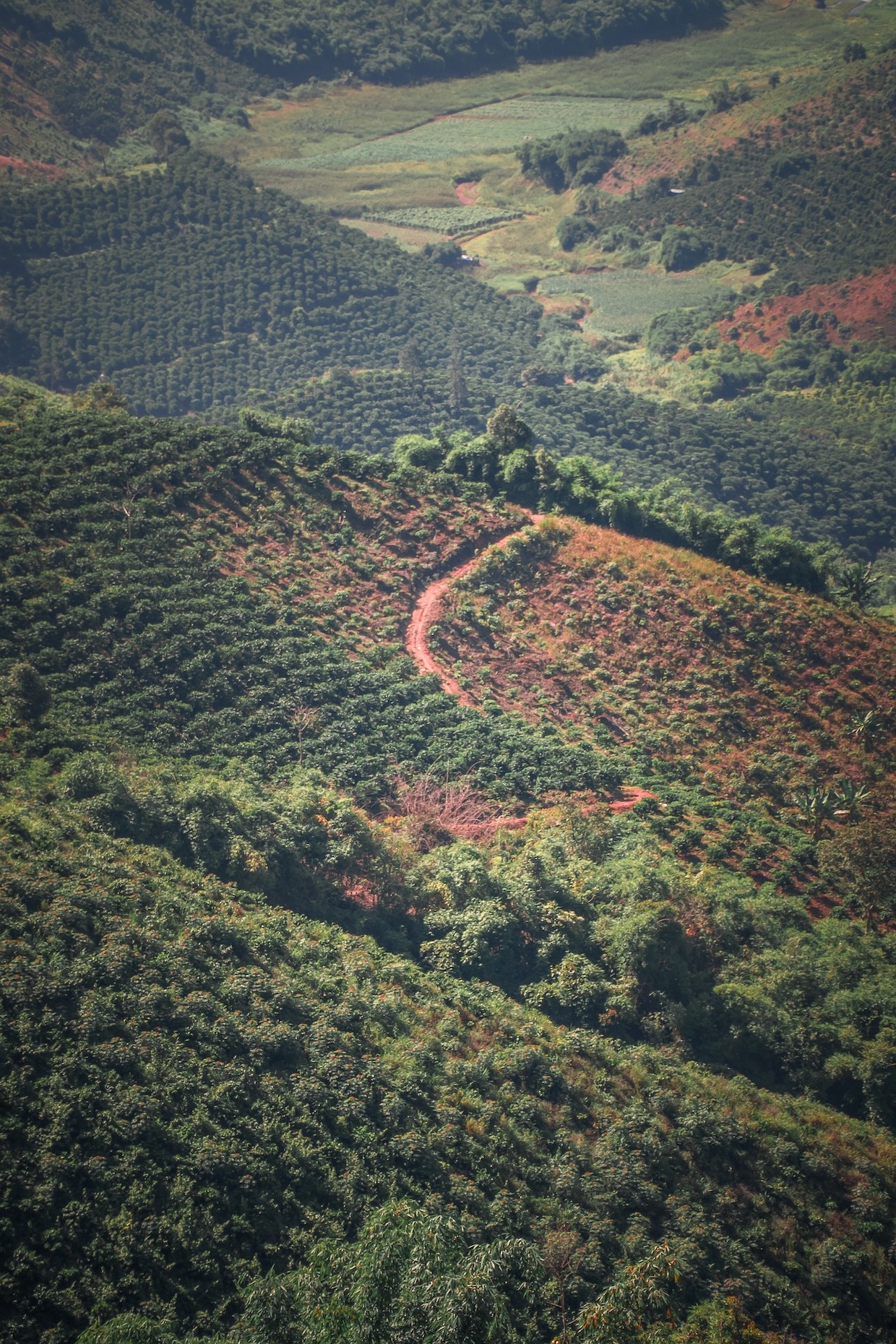[Note: This column is part of an ongoing editorial collaboration with sustainability expert Cory Gilman focused on deconstructing the subject of sustainability in coffee. Follow the full series here.]
There is no shortage of news stories demonizing green coffee production as a contributor to climate change. At the same time, there is a growing body of evidence pointing to its potential climate-positive impacts.
How can such diametrically opposed narratives exist side by side in popular media and within the coffee industry itself? And can they both possibly be true? (Spoiler alert: they often are.)
While such questions may lead to some interesting answers, a more important question might be, what happens when our collective discussions about coffee’s environmental impacts don’t take into account the actual places where coffee is grown, and the people who grow it?

“Colombia – Coffee Triangle 013 – coffee plantation tour” by mckaysavage is licensed under CC BY 2.0.
The coffee sector’s environmental influence is a huge and critical topic on a global scale, but it is nonetheless intertwined with social justice, equity, inclusion, indigenous rights, cultural preservation, livelihoods, land resiliency, economic viability and human health, among other factors.
Over the next few weeks, this series plans to address a number of issues related to the environmental sustainability of coffee and how it relates to the other social and economic issues.
This post intends to provide a broad comparison of two types of coffee production from a land-use standpoint. Later, I’ll zoom out to assess each from an environmental impact perspective. Finally, we’ll bring it altogether by assessing how they relate to broader socio-economic and rights-based issues.
Getting Grounded: Where Coffee is Grown and How
There’s a reason coffee so often ends up splashed all over the internet as an emblem of climate change. Beyond being a consumer product of disproportionately high relevance to most people, it is distinct in that it can play either hero or villain in the climate change narrative.
There is also the matter of where coffee is grown. Arabica species coffee in particular, which represents about 70% of global production, requires specific environmental conditions within equatorial regions.
We’re talking just-right Goldilocks requirements: a thin elevation band of about 1,800 to 6,300 feet, ideal daytime temperatures of 18-24 degrees Celsius and night temperatures below 15 degrees Celsius. This leads to mountainous, forest-heavy, often tropical areas.
Coffee’s interaction with these environments is precisely what can position it as either a contributor to climate change or a mitigating force. In other words, depending on how coffee is grown, it has the potential to be one of the most environmentally beneficial agricultural land uses or it could be one of the most detrimental.
Agroforestry Systems
Let’s start with the good. Typically in the wild, coffee grows under a lush multi-strata canopy and works synergistically with this ecosystem to protect and even regenerate its forest home.
Here, coffee is notably shaded, necessitating a low-to-moderate plant density so each has appropriate space to develop its root system and take in adequate elements (light, water, nutrients).
When farmers intentionally mimic this natural environment, it’s called agroforestry — which in short is an agricultural system with a forest-like setting through the integration of different kinds of trees among crops. This follows the school of thought that nature knows best, and forests can largely take care of themselves without significant inputs or interventions.
Within agroforestry systems, coffee may be intercropped with a variety of other complementary crops — depending on local conditions — such as fruit trees.
From a coffee production standpoint, some studies have shown that the lower plant density necessitated by agroforestry systems can be countered by improved plant resiliency and even coffee quality.
The canopy structure is what creates these benefits by preventing over-exposure to the elements, filtering sunlight, wind and excessive rainfall while facilitating well-nourished soil. As a result, the coffee plant may be much less vulnerable to disease.
Additionally, pest and weed control in agroforestry systems are promoted by insect-eating pollinators and protective fauna. When bees are attracted and given a safe habitat, pollination has been proven to increase per-plant output by 20-25% while having a positive effect on flavor and bean size uniformity.
Monoculture Coffee Plantations
Unlike agroforestry systems, monoculture coffee production is the kind that truly does create a cascade of negative environmental externalities.
This approach, often lauded as ‘modernized’, grew out of the Green Revolution. In its simplest terms, monoculture agriculture is where land is dedicated exclusively and intensively on a singular agricultural product — in this case, arabica coffee.
The traditional approach is to grow as much of one thing as possible on a given amount of land, resulting in high plant densities and as much output as possible. To maximize land availability, and thus increase overall output, a significant alteration to the natural landscape is required — namely, deforestation.
While erasing much of coffee’s natural ecosystem, monculture production touches nearly every facet of its production. For example, without a tree canopy to provide shade, coffee plants are exposed to full sun. This disrupts natural nutrient cycling, biodiversity symbiosis and temperature regulation, all of which are vital for resilience against pests and disease.
Additionally with higher plant densities, plants are competing for space and nutrients. Thus, monoculture systems often rely on an array of chemical inputs — synthetic fertilizers, pesticides, fungicides and herbicides — in order for the coffee plants to maintain their desired yields.
The more these inputs are used, the more depleted the soil and its surroundings become. As natural soil composition changes in response to these shocks, it grows increasingly dependent on such inputs — creating a cycle of usage escalation.
What results is a distorted production landscape, where plant management essentially becomes a battle against nature, rather than a reflection of a symbiotic relationship.
Impact on Planet Health
These vastly different approaches to land use and coffee production represent one way in which coffee can star in two radically different climate change narratives.
While many of the world’s millions of smallholder coffee farms are likely to fall somewhere more towards the middle of this agroforestry-to-monoculture spectrum, the coffee sector at large is grappling with these two opposing forces.
Meanwhile, as global demand for the crop continues to rise, coffee’s greater impacts on soil, water, biodiversity, air, climate and, most importantly, people, are likely to reverberate for generations.
Stay tuned for more…
Cory Gilman
Cory Gilman is never happier than when working to build equitable, inclusive and regenerative coffee systems — with a passion for prosperous farmer livelihoods as a precursor for broader environmental and social outcomes. Prior to focusing specifically on coffee, she spent a decade advancing sustainability initiatives for leading CPG companies. After a year living with and learning from smallholder farmers across Southeast Asia, Cory knew she wanted to spend her career supporting the people behind every cup and the places they call home. "She holds a Masters degree in Sustainable Development and Social Innovation, and is eager to support more resilient and equitable supply chains across sectors.
Comment
5 Comments
Comments are closed.









It’s nice to think that coffee agroforestry is the hero and intensive the villain.
But reality is more complex.
If all the world’s coffee were converted to agrofor, biodiversity would increase, but yields would decline, hence leading to further deforestation for new coffee lands.
And the managed coffee forests of Ethiopia are not all that they seem. E.g. https://www.academia.edu/2698148/Semi_forest_coffee_cultivation_and_the_conservation_of_Ethiopian_Afromontane_rainforest_fragments
PS Baker, great insight, yet further deforestation for new coffee lands seem to occur regardless whether a producer is successful with implementing new forms of technology ( genetics, precision application of fertilizer, climate smart shade regimes, waste water filtration). If a producer increases their yield by 30% on let’s say 5 hectares, and they have 5 more hectares of virgin forest next to their original 5 hectares for sale, they may now have enough financing to purchase this additional land and will successfully convert their new intensified coffee agroforestry system (best of both worlds they say) onto these new 5 hectares where they will convert and thin out the messy-biodiverse virgin forest into a more efficient coffee agroforestry system that probably maintains a hybrid shade-tolerate understory coffee crop with a thinned out canopy (it’s profitable to sell virgin timber) and then plant Inca, which is fast growing, nitrogen fixating, and easier to prune than old growth forests. Perhaps times are changing, but capitalism still seems to be driven by profits, and without regulation, growth and expansion is the nature of the beast. Forests where farmers let nature do it’s work and keep yields down are healthier and will last longer. Chiapas comes to mind. But can agroforestry systems last for centuries? Certainly so, as managed forests in Peru have been successful for centuries, dating back to pre-Inca times, where they were producing enough food and energy to support more than 30 million people on hillside farming practices across all of Peru, Bolivia, etc. But if it’s all dedicated to one cash crop that has no nutritional value, sold on an increasingly volatile commodities market, where financial tools are mostly understood by a select few, well, yeah the reality is more complex, climate-friendly or not.
Correction… I misspelled the name for the shade tree Inga (not Inca). My apologies.
Wiki- “Inga is a genus of small tropical, tough-leaved, nitrogen-fixing trees and shrubs, subfamily Mimosoideae.”
“further deforestation for new coffee lands seem to occur regardless whether a producer is successful with implementing new forms of technology”
This doesn’t seem to have happened in Brazil, where more coffee is produced on less area (though at what cost to pollution levels can only be imagined …)
“without regulation, growth and expansion is the nature of the beast …” Yes indeed, that’s the libertarian market ideology, everyone does what they want.
Re Chiapas, I used to live in the Soconusco coffee zone … grinding poverty was widespread. The work of Richter suggests massive ecological deterioration (e.g. The Ecological Crisis in Chiapas; Mountain Research & Dev 20: 332–339).
Re Peru, it’s tricky to know how those people lived – the society was 100% agrarian authoritarian. The Mayan Era collapsed pre-Cortez; the Mexica though achieved very high productivity & population but I don’t think that’s a good model for our times (Hugh Thomas’ ‘Conquest: Montezuma, Cortes, & the Fall of Old Mexico’ is a great read) – so I think it’s problematic to look back to a halcyon age that probably didn’t exist. In my experience, farmers don’t want to return to what they conceive would be their grandparents farming system.
Bottom line: almost anything one can say about coffee production is both true and false depending on the circumstances. For me the real problem is that the coffee industry is sleep-walking; even SCA – which I used to think of as progressive – seems more interested in the latest varietal or processing method, than confronting the serious problems in the field.
Have a look at some of my of my posts on LinkedIn . “sloth friendly coffee”and several others.
My 9 ha coffee farm after initiating reforestation in 1995 on what was barren pasture land has become a grand botanical garden with amazing biodiversity (soil life, reptiles , amphibious , avifauna , mamals, insects….
Glad to come back to you if there should be interest in knowing more
Best greetings form the Venezuelan Tropical Andes
Bart Pauwels